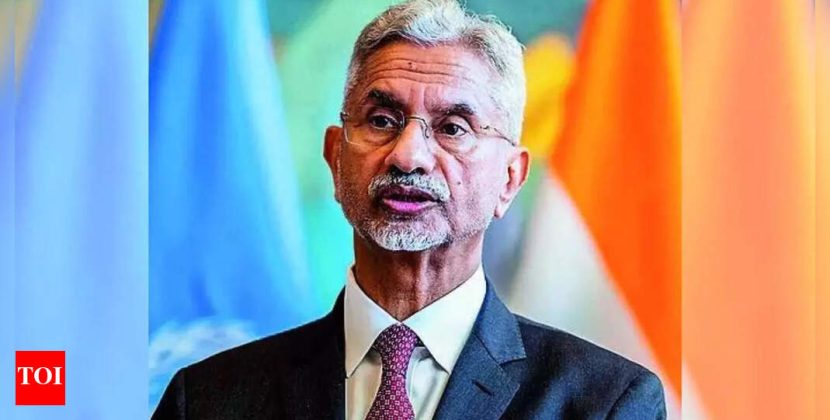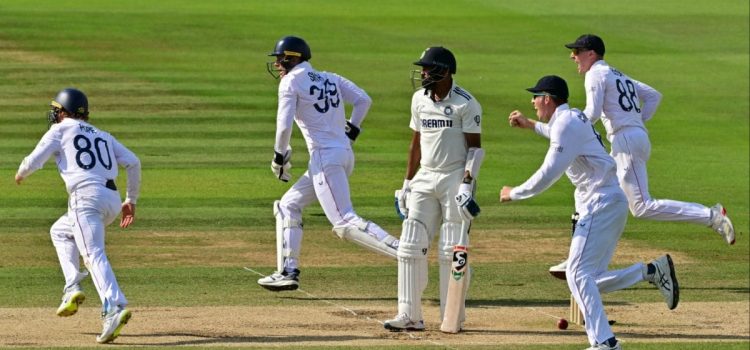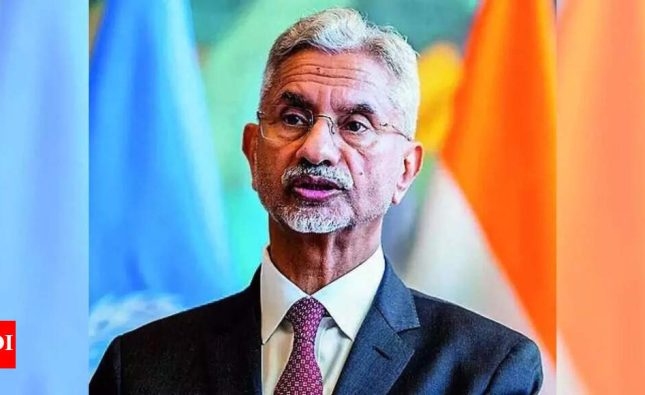
Last Updated:
In reply to the target of 193 runs set by the English team, India could only manage to score 170 runs in 74.5 overs and went on to lose the fixture by 22 runs.
India suffered a heartbreaking defeat by 22 runs against England in third Test. (Picture Credit: AFP)
England bowled India out for 170 runs on Monday (July 14) to win the Lord’s Test and go 2-1 up after three matches in the ongoing five-match series. The Indian team was asked to chase down a target of 193 runs by the Englishmen in 108 overs but despite Ravindra Jadeja’s unbeaten 61-run knock, Shubman Gill-led side could only manage to score a total of 170 runs in 74.5 overs.
The defeat in the closely fought contest at Home of Cricket was India’s fourth smallest defeat in Test cricket by runs margin and second smallest defeat in away Tests.
India’s smallest defeat by runs margin in Test cricket is by 12 runs against Pakistan. In the year 1999, India faced Pakistan at MA Chidambaram Stadium in Chennai from January 28 to 31, and in reply to the 271-run target set by the Wasim Akram-led side, could only manage to score 258 runs in 95.2 overs. Legendary Sachin Tendulkar scored 136 runs from 273 balls in the second innings of that fixture.
Smallest win in Tests against India (by runs)
| WINNER | MARGIN | TARGET | OVERS | VENUE | YEAR |
| Pakistan | 12 | 271 | 95.2 | Chennai | 1999 |
| Australia | 16 | 341 | 84.7 (8 balls/over) | Brisbane | 1977 |
| Pakistan | 16 | 221 | 93.5 | Bengaluru | 1987 |
| England | 22 | 193 | 74.5 | Lord’s | 2025 |
| New Zealand | 25 | 147 | 29.1 | Mumbai (WS) | 2024 |
| England | 28 | 231 | 69.2 | Hyderabad | 2024 |
| England | 31 | 194 | 54.2 | Birmingham | 2018 |
| Australia | 38 | 372 | 100.1 | Adelaide | 1992 |
| West Indies | 38 | 120 | 35.5 | Bridgetown | 1997 |
| Australia | 39 | 395 | 109.6 (8 balls/over) | Brisbane | 1968 |
In away Tests, India’s smallest defeat by run margin is 16 runs. In the year 1997, India fell short by just 16 runs against the Aussies at The Gabba in Brisbane.
Smallest win in away Tests against India (by runs)
| WINNER | MARGIN | TARGET | OVERS | VENUE | YEAR |
| Australia | 16 | 341 | 84.7 (8 balls/over) | Brisbane | 1977 |
| England | 22 | 193 | 74.5 | Lord’s | 2025 |
| England | 31 | 194 | 54.2 | Birmingham | 2018 |
| Australia | 38 | 372 | 100.1 | Adelaide | 1992 |
| West Indies | 38 | 120 | 35.5 | Bridgetown | 1997 |
| Australia | 39 | 395 | 109.6 (8 balls/over) | Brisbane | 1968 |
| New Zealand | 40 | 407 | 96.3 | Auckland | 2014 |
| Australia | 47 | 493 | 141.4 (8 balls/over) | Adelaide | 1978 |
| Australia | 48 | 364 | 87.1 | Adelaide | 2014 |
| England | 60 | 245 | 69.4 | Southampton | 2018 |
The defeat on Monday was India’s 13th Test loss in 20 matches played so far at Lord’s. India has not lost more Test matches in any other venue in the world than at Lord’s.
India’s Test results at Lord’s
| YEAR | WINNER | LOSER | MARGIN | INDIA CAPTAIN |
| 1932 | England | India | 158 runs | CK Nayudu |
| 1936 | England | India | 9 wickets | Maharajah of Vizianagram |
| 1946 | England | India | 10 wickets | Iftikhar Ali Khan Pataudi |
| 1952 | England | India | 8 wickets | Vijay Hazare |
| 1959 | England | India | 8 wickets | Pankaj Roy |
| 1967 | England | India | an innings & 124 runs | Mansur Ali Khan Pataudi |
| 1971 | DRAW | — | — | Ajit Wadekar |
| 1974 | England | India | an innings & 285 runs | Ajit Wadekar |
| 1979 | DRAW | — | — | Srinivas Venkataraghavan |
| 1982 | England | India | 7 wickets | Sunil Gavaskar |
| 1986 | India | England | 5 wickets | Kapil Dev |
| 1990 | England | India | 247 runs | Mohammad Azharuddin |
| 1996 | DRAW | — | — | Mohammad Azharuddin |
| 2002 | England | India | 170 runs | Sourav Ganguly |
| 2007 | DRAW | — | — | Rahul Dravid |
| 2011 | England | India | 196 runs | MS Dhoni |
| 2014 | India | England | 95 runs | MS Dhoni |
| 2018 | England | India | an innings & 95 runs | Virat Kohli |
| 2021 | India | England | 151 runs | Virat Kohli |
| 2025 | England | India | 22 runs | Shubman Gill |
Only three Indian captains—Kapil Dev, MS Dhoni, and Virat Kohli—in the last 93 years have managed to win a red-ball match at Lord’s.
view comments
- Location :
London, United Kingdom (UK)
- First Published:











